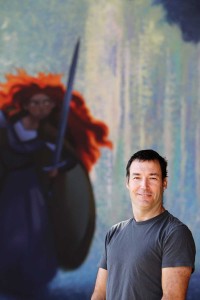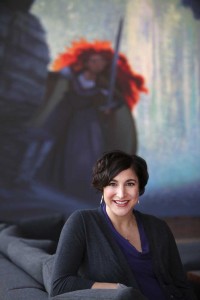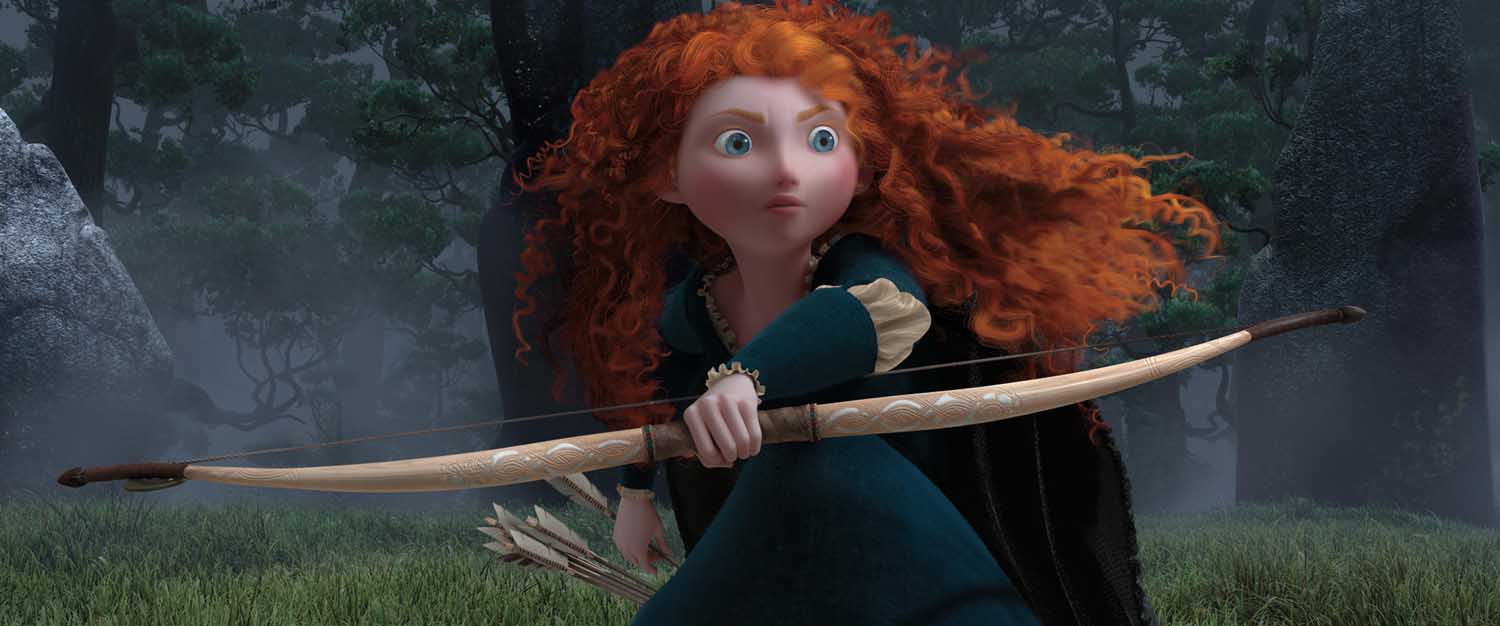![]()

“She is a tough character who speaks her mind.” he continues. The response, he says, from mothers, girls and audiences in general, is “Thank you for showing us a strong character that doesn’t need to be saved.”
But however strong Merida is – and that strength is almost sure to garner the film a best animated feature nomination – she also needed to be believable, a real girl in a real place. And for that, there needed to be Wonder Moss.
“Wonder Moss” is both a metaphor – for what producer Katherine Sarafian calls “a completely new pipeline, and suite of software” deployed by Pixar, and a CGI algorithm – a way of adding lichen on rocks and other organic details. Wonder Moss allows for the randomness of nature itself, as displayed, for example, in a primeval Scottish forest.

“When you were doing an animated film, you didn’t have spontaneity,” Andrews continues. Though he doesn’t necessarily mean animated characters improvising a performance as in a Robert Altman film (though sometimes voice actors might), but a visual spontaneity where an angle, lens flare or pool of light is “discovered” in a shot during filming.
So along comes Wonder Moss, which became the name of one of the tools in that new Pixar pipeline – along with Taz (named for a certain beloved Looney Tunes icon), Presto, their animation software, and the reliable RenderMan, which has been a Pixar 3D modeling staple.
“We could push aspects of light, weather and shapes,” Andrews explains, recalling several scouting trips he took with Sarafian. “You can’t make a straight line through a forest in Scotland,” he says, whether you’re riding a horse through the trees or shooting an arrow through them.
So the randomness built into the new rendering tools allowed for that same level of surprise nature provides when you’re ambling or fleeing across a landscape. Sometimes there would be a hanging branch in a shot, and when there was, they would just have to deal with it.

This randomness also extended to actors, particularly the background players, who are usually – in the digital world – a repeating series of face and body types. This time, the characters were more organic, providing “the biggest variety of crowds we’d ever had,” Andrews recounts. There were huge groups he would look at, so many that Pixar was running out of names to call the additional new “types” populating the shots. “Our extras could look diverse and interesting.”
Both these threads, actors and environment, came together for Andrews when he told his animators that characters would have their costumes on when being animated. In other words, body movement and fine-tuning cloth would not be considered separate steps.
“I wanted them to animate in context of what the final character was,” Andrews says. “I was forcing them to interact with the environment.” So, aside from the spontaneous jagged branch or soft focus or robes dragging through mud or getting caught on that aforementioned branch, there was also the tactile aspect of performance, which Andrews likens to a character undertaking Shakespeare. When you have Lear’s ragged costume on when crawling over the heath in a storm, your performance is different than when you’re rehearsing in street clothes.
And speaking of inclement heaths, Andrews adds that he wanted to exacerbate “shadows in the room” – particularly of the castle in which Merida’s family lives – and would turn off lights on the virtual set, to get the effect. He would also “smoke the sets to perpetuate that sense of damp.”
So this could be a new modus operandi for Pixar. “It all depends on the film,” he says, “For Monsters, Inc., you’re not going to do this. There isn’t one way we do things. We’re director-driven. That’s why Brad Bird films feel like Brad Bird films.”
Pixar strives, Sarafian adds, for a certain, high “level of quality and craftsmanship and story.” This film happened to have a very different palette than others they had worked on for the studio.
“Scotland’s all about texture,” Andrews concludes. And so, evidently, is Brave.





